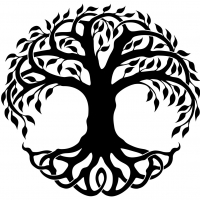- Posts: 102
Proof of Concept
Chaos is order, but the players are at war. Peace is when all the orders coexist.
and I, for one, am completely lost as to what it is you are talking about anymore. At the risk of sounding rude, I daresay it might even bring into question whether the former statement sounded so sensible because you actually understood any part of what you were saying or purely on accident, fueled perhaps by the reader's own charity than it was by any profundity of the statement in question.
In a forest, all the 'players' have just the correct kind of relationship with one another that the forest survives. The numerous trees take what they need from the soil and the air, leaving room for animals to find homes in and around them. There are a great many 'players' behaving in a way that allows them all to coexist in a relatively stable state.
A lightning bolt strikes one tree and begins a forest fire. Suddenly, that tree is a danger for all the other trees, for it is the source of the fire. Quickly, the fire spreads through the forest, harming other trees and animals alike. No special actor has really been added into this scene (although you could make out the lightning bolt to be one, the fire continues as a result of the kind of system the tree is; if the lightning bolt had struck a tall rock, there would have been less of a problem). There is no malicious figure making the fire go after the trees or the animals. It is simply that the nature of the relationship between all the 'players' has changed, moving the system from an ordered state to a chaotic one.
I, for one, think it is very well put to say that order and chaos are really two different arrangements of the same 'players', the same basic parts. Order occurs when all the various systems are in a stable relationship with one another, and chaos occurs when that relationship becomes unstable. Chaos and order are kinds of relationships between 'players', they are not 'players' in of themselves.
Please Log in to join the conversation.
- Vincent Causse
-

- Offline
- Banned
-

- Posts: 262
Please Log in to join the conversation.
Nothing says a rule-goverend system the rules of which we perfectly understand cannot also be chaotic, though. That's not what chaos means. Take your own example of gravity. We have only strictly deterministic theories of gravity so far, but even if we take them seriously at that they are still perfectly capable of governing chaotic systems. If one can specify exactly the mass density and mass flow density of a gravitationally closed system, one can predict and retrodict all of its history exactly. That is what makes it deterministic, all right. However, if the system is any different than its description, then not only will it eventually deviate noticeably from either the prediction or the retrodiction, but in fact that deviation in the past and future surpasses at one point or another any arbitrarily large limit. This is chaos. It has nothing to do with whether or not we understand the system on a fundamental level. Even toy systems that live only in an ideal world of spherical cows, designed from the ground up to obey well-defined and perfectly understood rules, can still easily be chaotic in that two trajectories arbitrarily close in one phase space location are arbitrarily far apart in another. So just because something is chaotic and we recognize it as such doesn't mean we don't understand it, even down to its most fundamental level.Vincent Causse wrote: Chaos is what we call, the states of things or actions that we do not understand.
Better to leave questions unanswered than answers unquestioned
Please Log in to join the conversation.
Please Log in to join the conversation.
Please Log in to join the conversation.

